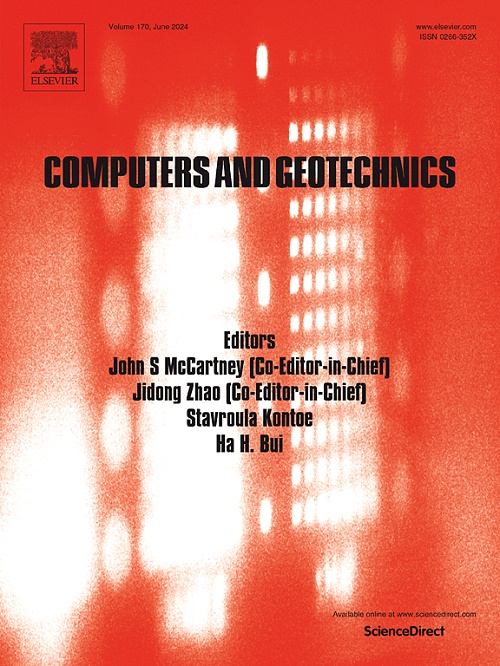On the role of aspect ratio on the geocell-reinforced soils: A coupled continuum-discontinuum study
IF 5.3
1区 工程技术
Q1 COMPUTER SCIENCE, INTERDISCIPLINARY APPLICATIONS
引用次数: 0
Abstract
Geocells are three-dimensional, interconnected cellular geosynthetics widely used to enhance the overall strength of soils. Their foldable structure can cause variations in pocket shape during installation, depending on the extent of extension. Understanding the impact of these shape variations is essential for optimizing reinforcement efficiency and reducing the associated geocell application costs. The aspect ratio, defined as the ratio of the cell’s transverse (welded) axis to the longitudinal (wall summit) axis, is proposed to evaluate the degree of extension of the most commonly utilized honeycomb-shaped geocell. A coupled continuum-discontinuum numerical method was employed to investigate the behavior of honeycomb-shaped geocell reinforced soils across various aspect ratios under confined compressive loading. The simulation results indicate that a geocell with an aspect ratio of 1.0 exhibits optimal reinforcement efficiency, and whereas reinforcement efficiency decreases as the aspect ratio deviates from 1.0 causing pocket geometries to flatten. The superior performance of rounded geocells is attributed to their enhanced ability to promote load-bearing in strong contact subnetworks. This results in denser packing structures, higher contact force anisotropy from a microscopic perspective, and greater confinement capacity against deformation from a macroscopic perspective.
求助全文
约1分钟内获得全文
求助全文
来源期刊

Computers and Geotechnics
地学-地球科学综合
CiteScore
9.10
自引率
15.10%
发文量
438
审稿时长
45 days
期刊介绍:
The use of computers is firmly established in geotechnical engineering and continues to grow rapidly in both engineering practice and academe. The development of advanced numerical techniques and constitutive modeling, in conjunction with rapid developments in computer hardware, enables problems to be tackled that were unthinkable even a few years ago. Computers and Geotechnics provides an up-to-date reference for engineers and researchers engaged in computer aided analysis and research in geotechnical engineering. The journal is intended for an expeditious dissemination of advanced computer applications across a broad range of geotechnical topics. Contributions on advances in numerical algorithms, computer implementation of new constitutive models and probabilistic methods are especially encouraged.
 求助内容:
求助内容: 应助结果提醒方式:
应助结果提醒方式:


